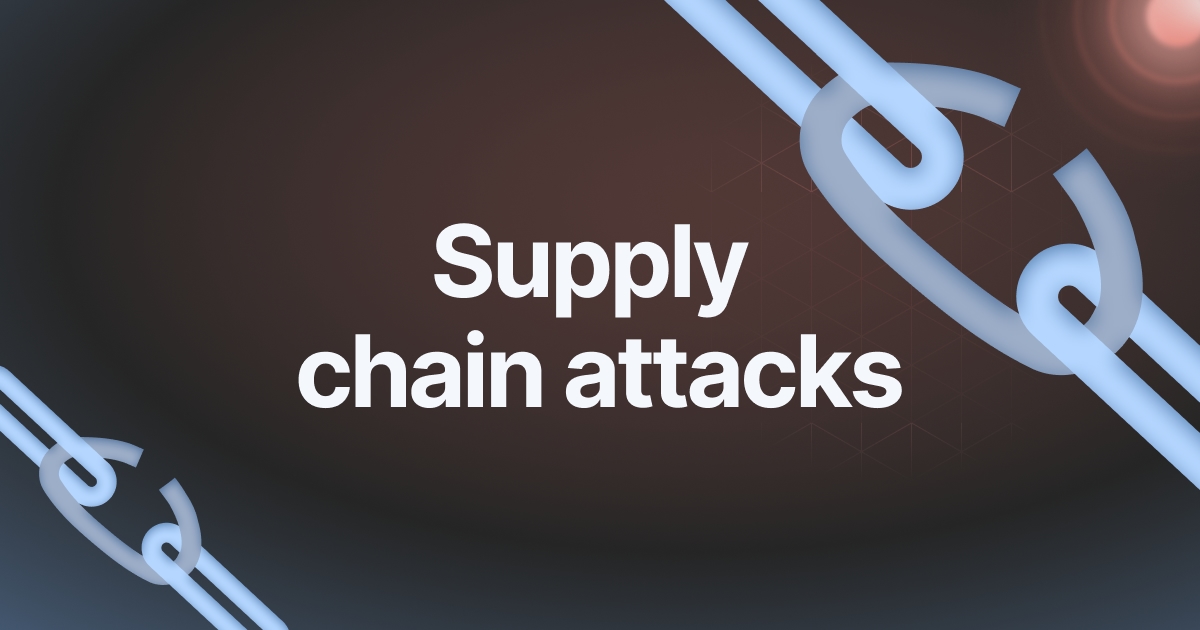In today’s interconnected digital world, the notion of a safe “perimeter” surrounding your company’s data is fast becoming obsolete. Supply Chain attacks are a new kind of cyberattack, which exploits complex software and services used by companies. This article dives deep into the realm of supply chain attacks, examining the growing threat landscape, your organization’s possible vulnerabilities, and the crucial steps you can take in order to strengthen your security.
The Domino Effect – How a tiny flaw can ruin your company
Imagine that your business does not use a certain open-source library, which is known to have vulnerabilities in security. The provider of data analytics on which you heavily rely does. This seemingly insignificant flaw becomes your Achilles point of pain. Hackers exploit this vulnerability within the open-source code, gaining access to the provider’s systems. They now have access into your organization, thanks to an invisibly linked third party.

This domino effect perfectly illustrates the insidious nature of supply chain attacks. They infiltrate seemingly secure systems through exploiting vulnerabilities in partner programs, open source libraries or cloud-based service.
Why Are We Vulnerable? What is the reason we are vulnerable?
Supply chain attacks are a result of the same causes that fuelled the modern digital economy – the increasing adoption of SaaS and the interconnectedness among software ecosystems. The complex nature of these ecosystems is difficult to track every bit of code an organization has interaction with or even interacts with indirectly.
Traditional security measures aren’t enough.
It’s no longer sufficient to rely on the traditional security measures to secure the systems you utilize. Hackers are able to bypass the perimeter security, firewalls, and other security measures to break into your network with the help of reliable third-party vendors.
The Open-Source Surprise It’s not all equal: Free Code is Created Equal
The widespread popularity of open-source software poses a further security risk. Although open-source libraries provide a myriad of benefits, their widespread use and reliance on volunteer developers can create security threats. The unpatched security flaws in the widely used libraries can expose many organizations who have integrated these libraries into their systems.
The Invisible Threat: How to Be able to Identify a Supply Chain Security Risk
The nature of supply chain attacks makes them challenging to detect. Certain indicators can be cause for concern. Unusual logins, unusual data activity, or unanticipated software updates from third-party vendors could suggest a compromised system within your system. A major security breach at a library or service provider that is widely used should also prompt you to take action immediately.
The construction of a fortress within a fishbowl: Strategies to mitigate the risk of supply chain risks
So, how can you fortify your defenses against these threats that are invisible? Here are a few important points to think about.
Conduct a thorough review of your vendor’s cybersecurity methods.
Mapping Your Ecosystem Make an inventory of all the software, libraries and services that your business employs, either in either a direct or indirect manner.
Continuous Monitoring: Check all your systems for suspicious activity and keep track of updates on security from third-party vendors.
Open Source With Caution: Use be cautious when integrating any of the open source libraries. Select those that have an established reputation and an active community of maintenance.
Transparency creates trust. Inspire your vendors’ adoption of strong security practices.
Cybersecurity in the Future: Beyond Perimeter Defense
Supply chain security breaches are increasing, and this has forced businesses in the field to rethink their strategy for cybersecurity. It’s no longer sufficient to concentrate on protecting your personal perimeter. Organizations must employ a more holistic strategy, focused on collaboration with suppliers as well as transparency within the ecosystem of software and proactive risk reduction across their supply chain. By acknowledging the looming shadow of supply chain breaches and actively strengthening your security so that your business remains safe in a constantly changing and connected digital world.